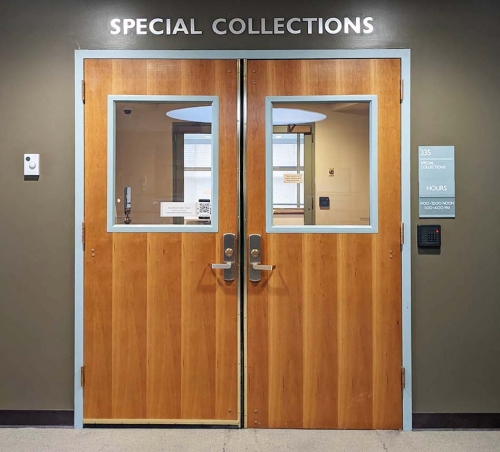The book collections housed in the Special Collections and Archives department reflect a wide range of subject matter, published dates, and formats. The Rare Book Collection, for example, contains illuminated manuscripts from the 13th c. as well as artists’ books from the 21st. A collection of rare books on astronomy and astrophysics on loan from the Dudley Observatory is also kept in this area. The primary purpose of these collections is to enhance and expand the College curriculum. Department staff are eager to work with classroom faculty to identify materials that would be useful for their classes. Faculty may bring classes to Special Collections to show students the volumes relevant to their course work. Please consult department staff at (518) 388-6620 or specialcollections@union.edu for further information.
These collections in Special Collections were established in a variety of ways. In some cases they were given in entirety to the College; in others they were created by the library staff to accommodate individual volumes of particular note (age, value, condition, rarity, association, etc.) which needed to be housed apart from the Library’s circulating collection. Some of the collections are steady state with no growth anticipated, while others are growing slowly with additions from various avenues. In general, titles are added to the collections through one of three avenues: purchase, primarily from funds supplied by the Friends of the Library, gift, or transfer from the Library’s circulating collection. Anyone considering a book donation to Special Collections is asked to contact department staff beforehand.
